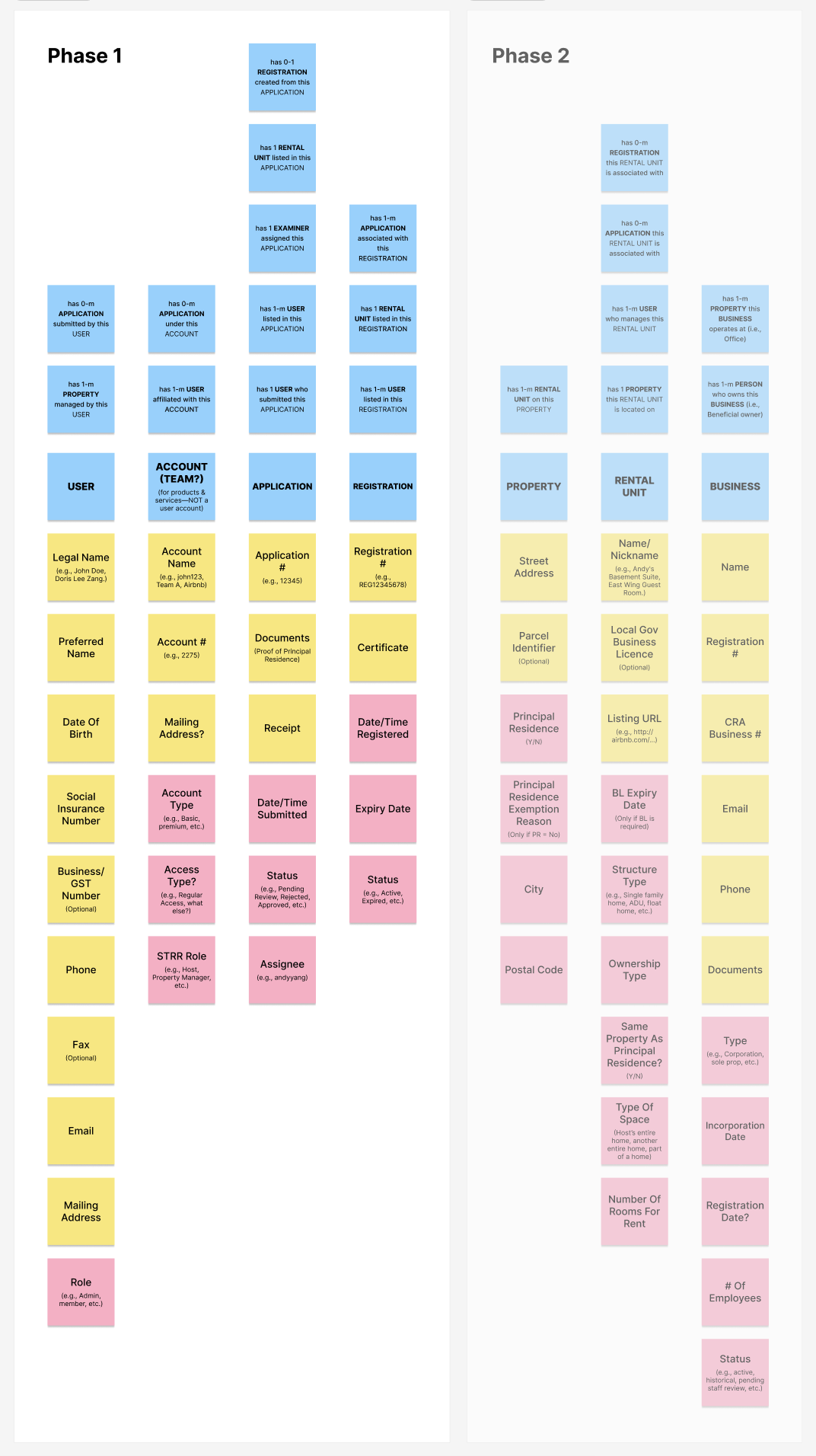
UI/UX | Web & Mobile
Designing BC’s Short-Term Rental Registry
6 months, 2024-2025
Timeline
Web & mobile
Platform
1 of 2 UX designers,
Primary UI designer
My Role
Overview
The Short-Term Rental Registry was a high-profile, complex initiative. It included public-facing application forms for registering rental units or platforms, as well as a comprehensive internal tool for adjudicators to review submissions. Delivered by the Ministry of Citizens’ Services for the Ministry of Housing, the project required navigating complex requirements and aligning numerous stakeholders across multiple teams and ministries to bring the system to life.
My Role
I joined the project midway as one of two UX designers tasked with overhauling the initial design. Working with stakeholders beyond the core agile team, I translated user research and complex requirements into intuitive interfaces tailored to multiple user roles.
Problems
Because registering a short-term rental property was mandated by new legislation—and involved fees—users were not engaging with our system voluntarily. This aversion meant we couldn’t afford any usability missteps. The redesign’s primary goal was to address the confusion and frustration observed in research by making the system smarter and reducing tedious manual tasks for users.
Process
Project Discovery: To quickly get up to speed and gain a holistic understanding of the system, I reviewed past user research and applied several techniques from the Object-Oriented UX (OOUX) toolset. The primary objective was to define the core objects users interact with, ensuring the system aligns with their mental models.
Noun Foraging: By compiling common nouns from the existing design, research, requirements, and team discussions, I identified potential core system objects (highlighted in blue) that users would primarily interact with. Some nouns were better suited as attributes (highlighted in yellow and pink) of the core objects.
Object Map: From the list of key nouns, I created an Object Map to guide my subsequent design process. Each column represented a core object in the system, along with its attributes and relationships with other objects.
CTA Matrix: With the CTA matrix, I mapped calls-to-action that can be performed on each core object by the two main user roles in our system. Paring down from a larger list, I prioritized the most essential CTAs for phase one of the redesign. This table also acted as a pseudo-checklist for me during the UI design.
Flow Diagrams: Collaborating with developers, business analysts, and adjudicators, I created user flow diagrams and other documentation as reference points for design and as a source of truth for the core team and key stakeholders.
Wireframes & Mockups: Leveraging our existing design system, I streamlined the process of creating mockups, gathering feedback, and iterating on designs. Thanks to the OOUX groundwork, I was able to deliver developer-ready designs efficiently, even as requirements and priorities evolved.
Specifications for the internal tool adjudicators used to review submissions.
Detail views of an application through various statuses.
Launch: Through adaptability and agile execution, the team successfully launched the MVP on schedule, meeting legislated deadlines. Development on the product continues to evolve.
Reflections
Looking back on this project, I have gained a deeper appreciation for the importance of adaptability in the face of uncertainty. Having a tight deadline, unapproved future funding, and shifting priorities mid-sprint, the project demanded constant reorientation.
One thing that went well was the team’s ability to quickly pivot without losing sight of core user needs. Despite the turbulence, early usability testing and direct user feedback helped guide design decisions, ensuring that even under pressure, the design addressed real pain points.
If I could approach this project again, I would advocate for conducting stakeholder workshops earlier and hosting alignment checkpoints more frequently, so the team could adapt in a more coordinated rather than reactive way.







